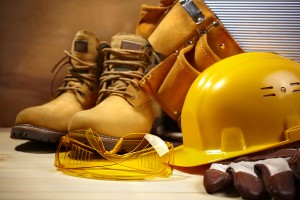I am becoming more and more focused on changing the safety culture of organizations. There are lots of training programs and fine instructors teaching all aspects of safety technology. Yet our organizations still have to deal with a lot of people getting hurt.
Most people don’t come to work expecting to get hurt. Most organizations want people to work safely. I think a large part of our challenge to moving towards safety excellence is the way our organization’s culture influences how people decide to work together, or not.
 Most of the safety people I’ve come to know approach organizations as if they are mechanical things to manipulate. Organizations are structured in functions. Knowledge is structured in pieces. People are narrowly skilled. Motivation is based on external factors. Information is shared on a need to know basis. Change is a troubling problem. People work in prescribed roles seeing only their part of the work. If change is needed people are moved around like chairs. Training is provided in abundance. Safety programs are set up as step-by-step processes where things are arranged in a prescribed sequence.
Most of the safety people I’ve come to know approach organizations as if they are mechanical things to manipulate. Organizations are structured in functions. Knowledge is structured in pieces. People are narrowly skilled. Motivation is based on external factors. Information is shared on a need to know basis. Change is a troubling problem. People work in prescribed roles seeing only their part of the work. If change is needed people are moved around like chairs. Training is provided in abundance. Safety programs are set up as step-by-step processes where things are arranged in a prescribed sequence.
There is a big emphasis on teaching people what to do and then expecting them to do only as they are told…as if they checked their brain at the locker.
In my experience, organizations are not mechanical things to be manipulated, but rather they behave more like a living system. Knowledge is seamless. Organizations are seen as a whole system. Work is flexible and without boundaries. People are multi-skilled and continuously learning. Motivation is based on links to the whole system. Information flows openly and freely. Change is happening all the time, and seen as an opportunity for improvement. People work beyond their roles. People see their work in relation to the whole, knowing and doing what needs to be done. People work safely because they want to go home safe at the end of the day. They understand the larger expectation of the business.
Organizations are complex adaptive systems. The tools to work in complex adaptive systems are different from those that work in organizations seen as machines. When the tools of complexity are used, things work much more effectively, people become engaged in working towards the success of the whole system and change can happen quickly.





